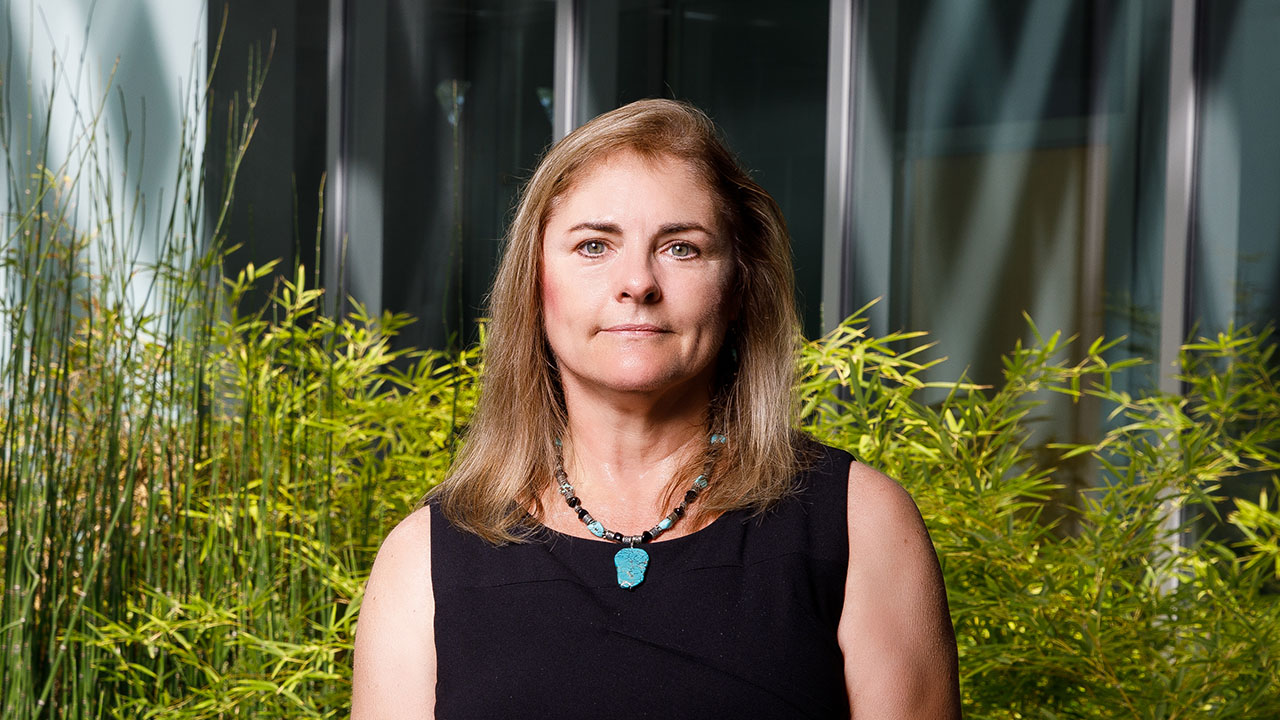National security has long been a driving force for technological innovation in this country. The internet, stealth technology, portable GPS, even the computer mouse grew out of efforts started in the U.S. Department of Defense.
This tradition continues today, with defense and security agencies of the U.S. government driving advancements in artificial intelligence, 5G, quantum computing and other technologies that will dominate the future and help determine global military and economic leadership.
But the DOD cannot do this on their own. It has always worked closely with universities as part of a broader innovation ecosystem, which also includes industry and national laboratories, to conduct groundbreaking research and to better understand the technology landscape in order to anticipate which advancements are most likely to be consequential to national security.
Arizona State University is already a leader in defense and national security research. And now two ASU representatives were recently appointed to the Defense Advanced Research Projects Agency (DARPA) Information Science and Technology Study Group.
The group brings 30 of the brightest scientists and engineers in the country together to identify new areas of development in computer and communication technologies and to highlight future potential research directions to DARPA, a DOD organization responsible for making pivotal investments in breakthrough technologies for national security. A core mission of DARPA is to maintain U.S. technological leadership and to reach for transformational change instead of incremental advances.
"Universities need to be involved in these discussions because they are able to bring both incredibly deep and incredibly broad expertise to the table," said Nadya Bliss, Global Security Initiative director.
Nadya Bliss, the executive director of ASU’s Global Security Initiative, was recently named vice-chair of the study group. Nancy Cooke, professor in human systems engineering and director of the Global Security Initiative's Center for Human, AI, and Robot Teaming, was also named as a member of the study group.
“This is a great opportunity for ASU to contribute to defense and security research,” said Bliss, who first served as a member on the ISAT Study Group nearly a decade ago. “Universities need to be involved in these discussions because they are able to bring both incredibly deep and incredibly broad expertise to the table. By deep I mean true subject matter experts who understand not only the current state of technology, but can anticipate where that technology is heading. And by broad, I mean the sheer range of disciplinary expertise available at universities, from engineering to social sciences to the arts.”
DARPA was established in the wake of the launch of Sputnik, the world’s first artificial satellite, by the Soviet Union in the early days of the Cold War. That event caught the U.S. national security community by surprise, and President Dwight D. Eisenhower created the Advanced Research Projects Agency (ARPA) – the name was later changed to DARPA – with the express purpose of preventing technological surprise.
The study group helps achieve this mission by providing regular access to some of the country’s leading minds. The ISAT Study Group was established by DARPA in 1987 to support its technology offices and provide continuing and independent assessment of the state of advanced information science and technology.
During her term as vice-chair (and following that, anticipated term as chair), Bliss intends to focus on three top priorities: expand the focus on interdisciplinary research, foster increased inclusion in DOD research initiatives, and enable more collaborations with varied partners.
“The collaboration helps to move my thought processes forward and provides me an opportunity to branch out into areas that are new to me," said Nancy Cooke, director of the Center for Human, AI, and Robot Teaming.
Cooke’s primary research focus is on human-machine teaming, a key priority for DARPA as the DOD incorporates more machines and artificial intelligence into its daily and mission operations.
”Being involved in predicting surprise for DARPA through collaborations with very bright scientists and engineers is incredibly rewarding,” Cooke said. “The collaboration helps to move my thought processes forward and provides me an opportunity to branch out into areas that are new to me. For instance, I have recently talked to ant and dog experts about viewing our AI partners as a different species, analogous to human-animal teams.”
Top graphic by Arizona State University.
More Science and technology

Science meets play: ASU researcher makes developmental science hands-on for families
On a Friday morning at the Edna Vihel Arts Center in Tempe, toddlers dip paint brushes into bright colors, decorating paper fish. Nearby, children chase bubbles and move to music, while…

ASU water polo player defends the goal — and our data
Marie Rudasics is the last line of defense.Six players advance across the pool with a single objective in mind: making sure that yellow hydrogrip ball finds its way into the net. Rudasics, goalkeeper…

Diagnosing data corruption
You are in your doctor’s office for your annual physical and you notice the change. This year, your doctor no longer has your health history in five-inch stack of paperwork fastened together with…




